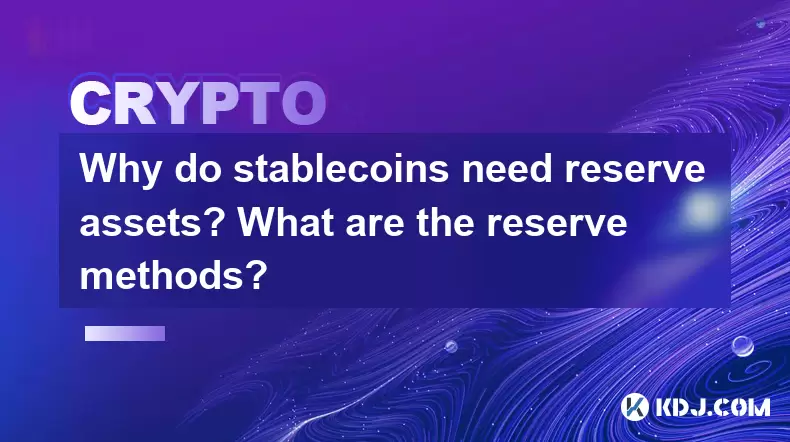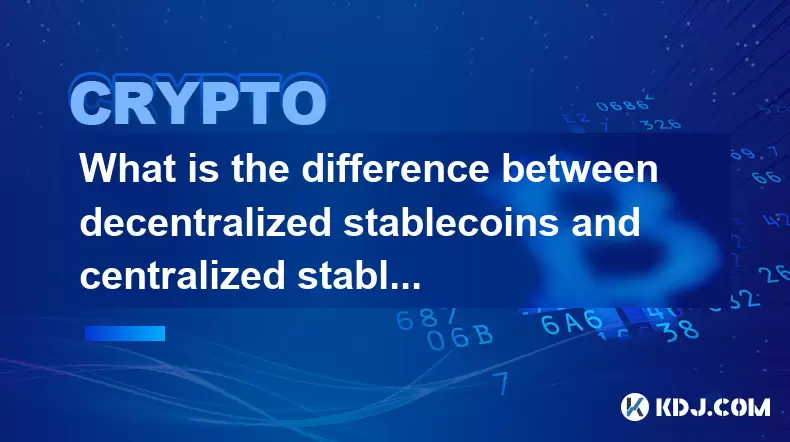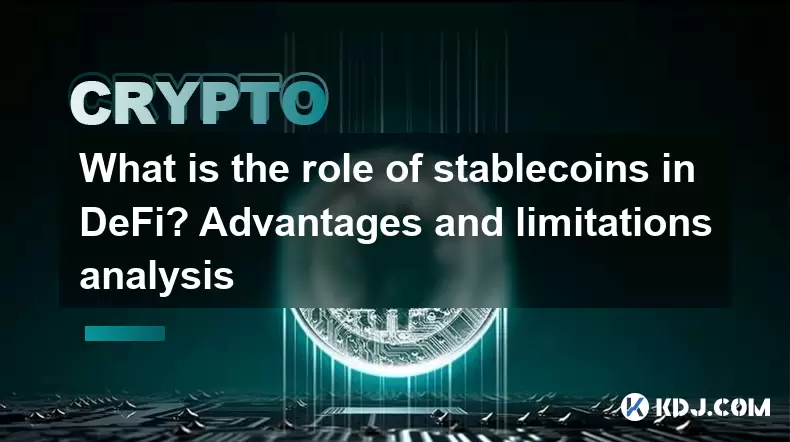-
 Bitcoin
Bitcoin $119200
-2.10% -
 Ethereum
Ethereum $4655
-2.09% -
 XRP
XRP $3.138
-3.71% -
 Tether USDt
Tether USDt $1.001
0.05% -
 BNB
BNB $853.1
-0.46% -
 Solana
Solana $197.5
-4.40% -
 USDC
USDC $0.0000
0.03% -
 Dogecoin
Dogecoin $0.2317
-6.22% -
 Cardano
Cardano $0.9598
-3.35% -
 TRON
TRON $0.3577
-2.32% -
 Hyperliquid
Hyperliquid $48.66
3.35% -
 Chainlink
Chainlink $22.88
-3.21% -
 Sui
Sui $3.853
-4.17% -
 Stellar
Stellar $0.4323
-4.82% -
 Bitcoin Cash
Bitcoin Cash $600.9
-2.22% -
 Ethena USDe
Ethena USDe $1.001
0.04% -
 Hedera
Hedera $0.2562
-4.37% -
 Avalanche
Avalanche $25.52
0.87% -
 Litecoin
Litecoin $123.1
-5.58% -
 Toncoin
Toncoin $3.450
-4.39% -
 UNUS SED LEO
UNUS SED LEO $9.509
2.64% -
 Shiba Inu
Shiba Inu $0.00001314
-4.69% -
 Uniswap
Uniswap $11.12
-4.29% -
 Polkadot
Polkadot $4.096
-3.60% -
 Dai
Dai $0.0000
0.02% -
 Bitget Token
Bitget Token $4.689
-1.42% -
 Cronos
Cronos $0.1577
-5.16% -
 Ethena
Ethena $0.7451
0.81% -
 Aave
Aave $314.6
-5.70% -
 Pepe
Pepe $0.00001125
-6.68%
Why do stablecoins need reserve assets? What are the reserve methods?
Stablecoins require reserve assets to maintain their value and stability, acting as a buffer against market volatility and ensuring regulatory compliance.
May 15, 2025 at 05:21 pm

Stablecoins are cryptocurrencies designed to minimize the volatility typically associated with other digital assets like Bitcoin and Ethereum. To achieve this stability, stablecoins are pegged to a reserve asset, which can be a fiat currency, another cryptocurrency, or a commodity like gold. The necessity of reserve assets and the methods used to manage these reserves are crucial to understanding the operational integrity and trustworthiness of stablecoins.
Why Stablecoins Need Reserve Assets
Stablecoins require reserve assets to maintain their peg to a specific value. Without these reserves, the stablecoin would be subject to the same price fluctuations as other cryptocurrencies, defeating the purpose of being a stable store of value. The reserves act as a backing mechanism, ensuring that each stablecoin in circulation can be redeemed for its pegged value. This backing is essential for user confidence and the overall stability of the stablecoin ecosystem.
The reserve assets also serve as a buffer against market volatility. If the market experiences a sudden drop in the value of the cryptocurrency, the reserve assets can be used to buy back the stablecoins, thereby maintaining their peg. This mechanism helps to prevent a death spiral where the value of the stablecoin collapses due to a lack of confidence.
Furthermore, reserve assets are necessary for regulatory compliance. Many jurisdictions require stablecoin issuers to hold reserves to ensure that they can meet redemption requests. This requirement helps to protect consumers and maintain the integrity of the financial system.
Types of Reserve Assets
Stablecoins can be backed by various types of assets, each with its own set of advantages and challenges. The most common types of reserve assets include:
Fiat-backed stablecoins are pegged to a fiat currency like the US dollar or the Euro. These stablecoins are typically backed by an equivalent amount of the fiat currency held in reserve. Examples include Tether (USDT) and USD Coin (USDC).
Crypto-backed stablecoins are pegged to another cryptocurrency. These stablecoins are often over-collateralized to account for the volatility of the underlying cryptocurrency. An example is DAI, which is backed by a basket of cryptocurrencies held in smart contracts.
Commodity-backed stablecoins are pegged to a physical commodity like gold or silver. These stablecoins are backed by an equivalent amount of the commodity held in reserve. An example is Pax Gold (PAXG), which is backed by physical gold.
Algorithmic stablecoins do not rely on traditional reserve assets. Instead, they use algorithms to control the supply of the stablecoin to maintain its peg. An example is TerraUSD (UST), which uses a combination of algorithms and incentives to maintain its peg to the US dollar.
Reserve Methods
The management of reserve assets is critical to the success of a stablecoin. Different stablecoins employ various methods to manage their reserves, each with its own set of procedures and safeguards.
For fiat-backed stablecoins, the issuer typically holds the reserve in a bank account or a combination of bank accounts. The issuer must regularly audit these accounts to ensure that the reserves match the number of stablecoins in circulation. The audit reports are often published to provide transparency to users.
- To manage fiat-backed reserves, the issuer follows these steps:
- Open a bank account specifically for holding the reserve assets.
- Deposit the equivalent amount of fiat currency into the account for each stablecoin issued.
- Regularly audit the account to ensure that the reserves match the number of stablecoins in circulation.
- Publish the audit reports to maintain transparency.
For crypto-backed stablecoins, the reserves are typically held in smart contracts on a blockchain. These smart contracts automatically manage the collateral and ensure that the stablecoin remains over-collateralized. The smart contracts are designed to liquidate the collateral if the value of the stablecoin falls below its peg.
- To manage crypto-backed reserves, the issuer follows these steps:
- Deploy a smart contract on a blockchain to hold the collateral.
- Users deposit the required amount of cryptocurrency into the smart contract to mint the stablecoin.
- The smart contract automatically manages the collateral and ensures that the stablecoin remains over-collateralized.
- If the value of the stablecoin falls below its peg, the smart contract liquidates the collateral to maintain the peg.
For commodity-backed stablecoins, the issuer holds the physical commodity in a secure storage facility. The issuer must regularly audit the storage facility to ensure that the commodity matches the number of stablecoins in circulation. The audit reports are often published to provide transparency to users.
- To manage commodity-backed reserves, the issuer follows these steps:
- Secure a storage facility to hold the physical commodity.
- Deposit the equivalent amount of the commodity into the storage facility for each stablecoin issued.
- Regularly audit the storage facility to ensure that the commodity matches the number of stablecoins in circulation.
- Publish the audit reports to maintain transparency.
For algorithmic stablecoins, the issuer does not hold traditional reserve assets. Instead, the issuer relies on algorithms to control the supply of the stablecoin. The algorithms are designed to increase or decrease the supply of the stablecoin to maintain its peg.
- To manage algorithmic reserves, the issuer follows these steps:
- Develop and deploy algorithms to control the supply of the stablecoin.
- Monitor the market to ensure that the algorithms are effectively maintaining the peg.
- Adjust the algorithms as necessary to respond to market conditions.
Transparency and Auditing
Transparency and regular auditing are essential for maintaining trust in stablecoins. Users need to be confident that the reserves backing the stablecoin are sufficient and accurately reported. Many stablecoin issuers publish regular audit reports to provide this transparency.
The auditing process typically involves a third-party auditor reviewing the reserves and verifying that they match the number of stablecoins in circulation. The auditor may also review the issuer's internal controls and procedures to ensure that they are adequate to maintain the peg.
Some stablecoin issuers go beyond traditional auditing and provide real-time data on their reserves. This real-time data can be accessed by users to verify the reserves at any time, further enhancing transparency and trust.
Risks and Challenges
Despite the necessity of reserve assets, there are several risks and challenges associated with managing them. One of the primary risks is the potential for the issuer to mismanage the reserves, either intentionally or unintentionally. This mismanagement can lead to a loss of confidence in the stablecoin and a subsequent collapse in its value.
Another challenge is the regulatory environment. Different jurisdictions have different requirements for stablecoin issuers, and navigating these regulations can be complex and costly. Failure to comply with these regulations can result in fines, legal action, and a loss of trust from users.
Additionally, the volatility of the underlying assets can pose a challenge. For crypto-backed stablecoins, the value of the collateral can fluctuate significantly, requiring the issuer to constantly monitor and adjust the collateral to maintain the peg. For commodity-backed stablecoins, the value of the commodity can also fluctuate, requiring the issuer to adjust the reserves accordingly.
Frequently Asked Questions
Q: Can stablecoins be backed by multiple types of assets?
A: Yes, some stablecoins are backed by a combination of different types of assets. For example, a stablecoin might be backed by a combination of fiat currency and cryptocurrencies. This approach can provide additional stability and flexibility but also adds complexity to the management of the reserves.
Q: How do stablecoin issuers ensure the security of their reserve assets?
A: Stablecoin issuers use various security measures to protect their reserve assets. For fiat-backed stablecoins, the reserves are typically held in secure bank accounts with robust security protocols. For crypto-backed stablecoins, the reserves are held in smart contracts on a blockchain, which are designed to be secure and tamper-proof. For commodity-backed stablecoins, the reserves are held in secure storage facilities with physical security measures in place.
Q: What happens if a stablecoin issuer goes bankrupt?
A: If a stablecoin issuer goes bankrupt, the management of the reserve assets becomes critical. In most cases, the reserves are held in a separate entity or trust, which is designed to protect them from the issuer's bankruptcy. Users can typically redeem their stablecoins for the underlying reserve assets, although the process may be more complex and time-consuming than usual.
Q: Are there any stablecoins that do not require reserve assets?
A: Yes, algorithmic stablecoins do not rely on traditional reserve assets. Instead, they use algorithms to control the supply of the stablecoin to maintain its peg. However, these stablecoins can be more volatile and less trusted than those backed by traditional reserve assets.
Disclaimer:info@kdj.com
The information provided is not trading advice. kdj.com does not assume any responsibility for any investments made based on the information provided in this article. Cryptocurrencies are highly volatile and it is highly recommended that you invest with caution after thorough research!
If you believe that the content used on this website infringes your copyright, please contact us immediately (info@kdj.com) and we will delete it promptly.
- Kazakhstan's Crypto Leap: Bitcoin ETF and Central Asia's Digital Finance Future
- 2025-08-13 12:45:19
- BlockDAG Presale Blazes Past $371M: Fundraising Frenzy Fuels Crypto Sensation
- 2025-08-13 13:05:21
- Meme Coins: Chasing the 2025 Surge – Which Will Moonshot?
- 2025-08-13 10:25:23
- Bitcoin's Wild Ride: Rally, Pullback, and What's Next
- 2025-08-13 10:25:23
- Bitcoin, Bitmax, and Institutional Demand: A New Era of Crypto Investment
- 2025-08-13 10:45:12
- Solana, ROAM, and Airdrops: What's the Buzz in 2025?
- 2025-08-13 11:35:13
Related knowledge

What is the difference between decentralized stablecoins and centralized stablecoins? Pros and cons comparison
Jun 15,2025 at 09:42am
What Are Stablecoins and Why Do They Matter?Stablecoins are a category of cryptocurrencies designed to maintain a stable value, usually pegged to an e...

What is the role of stablecoins in DeFi? Advantages and limitations analysis
Jun 14,2025 at 06:28am
Understanding Stablecoins in the DeFi EcosystemStablecoins play a pivotal role in the decentralized finance (DeFi) landscape by providing a bridge bet...

How do algorithmic stablecoins work? Potential risks and market impact
Jun 12,2025 at 02:07pm
Understanding Algorithmic StablecoinsAlgorithmic stablecoins are a type of cryptocurrency designed to maintain a stable value relative to a specific a...

How do stablecoins anchor legal currencies? Technical and economic model analysis
Jun 16,2025 at 08:43am
Understanding the Concept of StablecoinsStablecoins are a category of cryptocurrencies designed to maintain a stable value relative to a specific asse...

How do stablecoins maintain price stability? Principles and risk analysis
Jun 11,2025 at 12:01am
Understanding the Mechanisms Behind Stablecoin StabilityStablecoins are a category of cryptocurrencies designed to minimize price volatility, often pe...

What is the operating mechanism of stablecoins? In-depth exploration of its stability principle
Jun 10,2025 at 09:28pm
Understanding the Core Concept of StablecoinsStablecoins are a unique category within the cryptocurrency market, designed to address one of the most s...

What is the difference between decentralized stablecoins and centralized stablecoins? Pros and cons comparison
Jun 15,2025 at 09:42am
What Are Stablecoins and Why Do They Matter?Stablecoins are a category of cryptocurrencies designed to maintain a stable value, usually pegged to an e...

What is the role of stablecoins in DeFi? Advantages and limitations analysis
Jun 14,2025 at 06:28am
Understanding Stablecoins in the DeFi EcosystemStablecoins play a pivotal role in the decentralized finance (DeFi) landscape by providing a bridge bet...

How do algorithmic stablecoins work? Potential risks and market impact
Jun 12,2025 at 02:07pm
Understanding Algorithmic StablecoinsAlgorithmic stablecoins are a type of cryptocurrency designed to maintain a stable value relative to a specific a...

How do stablecoins anchor legal currencies? Technical and economic model analysis
Jun 16,2025 at 08:43am
Understanding the Concept of StablecoinsStablecoins are a category of cryptocurrencies designed to maintain a stable value relative to a specific asse...

How do stablecoins maintain price stability? Principles and risk analysis
Jun 11,2025 at 12:01am
Understanding the Mechanisms Behind Stablecoin StabilityStablecoins are a category of cryptocurrencies designed to minimize price volatility, often pe...

What is the operating mechanism of stablecoins? In-depth exploration of its stability principle
Jun 10,2025 at 09:28pm
Understanding the Core Concept of StablecoinsStablecoins are a unique category within the cryptocurrency market, designed to address one of the most s...
See all articles

























































































